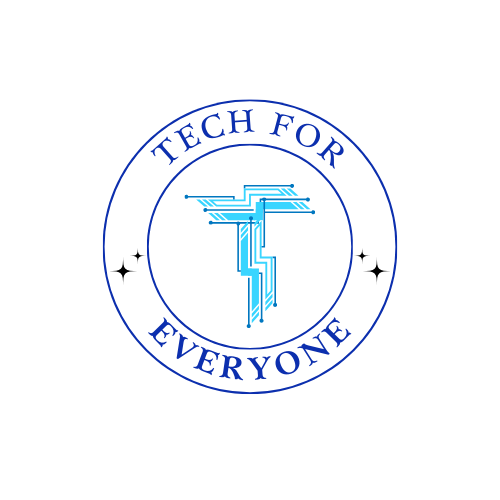Introduction to App Development
What is an App?
Section titled “What is an App?”An app, short for application, is a program or software that allows people to perform tasks on devices such as smartphones, tablets, or computers. Apps are designed to help people in many different ways, such as playing games, learning, listening to music, or even sending messages.
Examples of Apps:
- Educational Apps: Kahoot!, Starfall, IXL
- Entertainment Apps: YouTube, Roblox, Minecraft
- Utility Apps: Calculator, Weather, Maps
Discussion:
Let’s think about the apps you use every day. Take a moment to share the names of some apps on your phone or tablet. How do these apps help you? For example, if you use YouTube, it helps you watch videos. If you play a game like Roblox, it helps you have fun and challenge yourself.
How Apps Work
Section titled “How Apps Work”Apps are made by people called developers. Developers use special tools and languages to tell the computer or device what the app should do. While this might sound complicated, there are tools like Thunkable that allow us to create apps without having to type a lot of code.
Thunkable makes it easy to design and build apps using blocks. Blocks are like puzzle pieces that fit together to create actions in the app. Instead of typing out long lines of code, we’ll be using these blocks to tell our apps what to do!
Getting Started with Thunkable
Section titled “Getting Started with Thunkable”Thunkable is a website that lets us create apps for both Android and iOS devices. The great thing about Thunkable is that it’s easy to use, even if this is your first time building an app. Here’s how to get started:
- Logging In: Go to the Thunkable website on your tablet or computer and log in with your username and password.
- Creating a New Project: Once you’re logged in, click on the “Create New Project” button. Give your project a name. For example, you can name it “My First App.”
Now you’ll see the Thunkable interface, where you can design your app. There are two important areas to know about:
- Design Screen: This is where you’ll drag and drop components like buttons and text to build the layout of your app.
- Blocks Screen: This is where you’ll add the logic, or instructions, for how your app will work using code blocks.
Components of a Simple App
Section titled “Components of a Simple App”An app is made up of different parts or components that help it function. For our first app, we’ll be working with three key components:
- Text: Apps often show text on the screen to share information with the user. Text might be used to display a message or instructions.
- Buttons: A button allows users to interact with the app. When the button is pressed, the app will perform an action, like changing the text or going to another screen.
- Images: Images make the app look more interesting. You can add pictures, icons, or graphics to your app to make it more engaging.
In addition to these basic components, we can also use layouts to arrange everything neatly on the screen.
Creating Your First App: “Hello World”
Section titled “Creating Your First App: “Hello World””It’s time to build your very first app! We’ll start by making a simple app that displays the words “Hello World” and changes when you press a button.
Step-by-Step Instructions
Section titled “Step-by-Step Instructions”1. Open Thunkable
Make sure you’re logged into Thunkable. You should see the design screen where we’ll start building the app.
2. Create a New Project
Click on the “Create New Project” button and name your project “Hello World.”
3. Add Components to Your App
- Add Text: In the Design Screen, find the Label component in the side menu. Drag and drop it onto your app screen. In the properties section, change the label text to “Hello World.”
- Add a Button: Find the Button component and drag it below the label. Change the button text to “Click Me.”
- Add an Image (optional): If you want, you can add an image by dragging an Image component onto the screen. You can upload a picture or choose one from the image library.
4. Customize the App
- Change Text Color and Size: Select the label and change the text color and size to make it stand out. Do the same for the button if you want.
- Arrange Components: Make sure the button is below the text label and everything looks good on the screen.
5. Add Behavior Using Blocks
Now it’s time to make the button do something! Switch to the Blocks Screen:
- Find the block that says, “When Button1 Click.”
- Now find the block that says, “Set Label1 Text to,” and connect it to the first block.
- In the text box, type “You clicked me!” This will make the text change when the button is pressed.
6. Test Your App
Thunkable allows you to test your app while you’re building it. Use the Thunkable Live app on your tablet or phone to see the changes happen in real time. When you press the button, the text should change from “Hello World” to “You clicked me!”
Debugging: Fixing Problems
Section titled “Debugging: Fixing Problems”If your app doesn’t work the way you expect, don’t worry! Part of app development is testing and fixing problems. This is called debugging. Check if:
- All your blocks are connected properly.
- The correct components are named (e.g., Button1, Label1).
- The actions are happening in the right order.
Sometimes small mistakes can stop the app from working, so go back and check your steps carefully.
